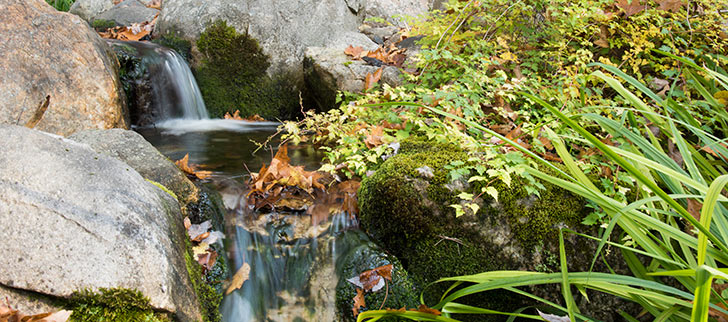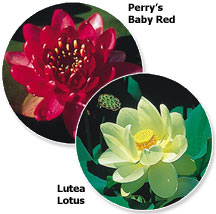
Even as the growing season slowly winds down, there are still many things the avid water gardener can do to keep his green thumbs wet. Besides seasonal pond maintenance, water gardeners in regions that experience freezing winters can focus their attention on autumn plant care. Savor the remaining water gardening season by providing the extra attention needed to properly winterize your plants.
Know your Zone
Check plant hardiness zones to determine which zone you live in and which plants are hardy to your zone. Plant hardiness zones refer to the geographic limitations of a particular plant, often based on temperature lows during winter. While many plants do fine in summer, regardless of zone hardiness, non-hardy plants will not survive a winter outside their specific zone without special care. If a plant is able to survive the winter in your particular zone, that plant is considered "hardy" to your zone.
 Hardy Plants
Hardy Plants
Bog/Marginal Plants - After the first frost, or when your hardy marginal plants begin to brown, prune the plant, leaving approximately 2 inches of plant material above soil level. Remove dead or decaying material so it does not make its way into your water garden. Rotting plant material can compromise water quality. However, several strategically selected plants, such as cattails, can be left untrimmed to add visual interest during winter.
Hardy Water Lilies and Lotus - If you have a deep water garden that will not freeze solid, hardy water lilies and lotus can be left in the water, as long as you sink them to deeper water for the duration of the winter. However, if you have a small or shallow water garden that freezes solid, they will need to be brought indoors for dormant storage, much like non-hardy marginal plants.
Non-hardy & Tropical Plants
Non-hardy & Tropical
Marginal Plants - Bring indoors for dormant storage or care for them as houseplants. For dormant storage, trim all the foliage, leaving approximately 2 inches of plant material above soil level. Store in a cool, dark area like a basement. Drape a damp piece of burlap or newspaper over the top of the pot to retain moisture. The darkness allows the plant to go dormant and prevents the plant from sprouting prematurely. Check the container periodically throughout the winter to make sure the potting material stays slightly moist.
Tropical Water Lilies - Plants of tropical origins, including many
floating and
submerged plants, will not survive the harsh winters of the northern tier of the United States. These plants are very sensitive to cold and need to be brought indoors. Saving just a few floating and submerged plants is sufficient since these fast-growing plants can repopulate themselves easily. Aquariums or large containers, such as a children's pool or RubbermaidTM container, are great for housing these plants. These tropical plants will need bright, supplemental lighting (a grow light or plant light) and heated water (at least 70°F) to over-winter successfully. Do not fertilize these plants during this period.
Proper autumn plant care ensures water gardeners are rewarded, for the time and effort they have invested over the summer, with the lush return of their pond plants in the following spring.
WE RECOMMEND:
- Heavy Duty Aqua Gloves - Made of thick PVC material with thick reinforced sleeves provide full arm-length protection.
- Pond Shears - Extend your reach to trim plants quickly and cleanly from more than 4 feet away.
|